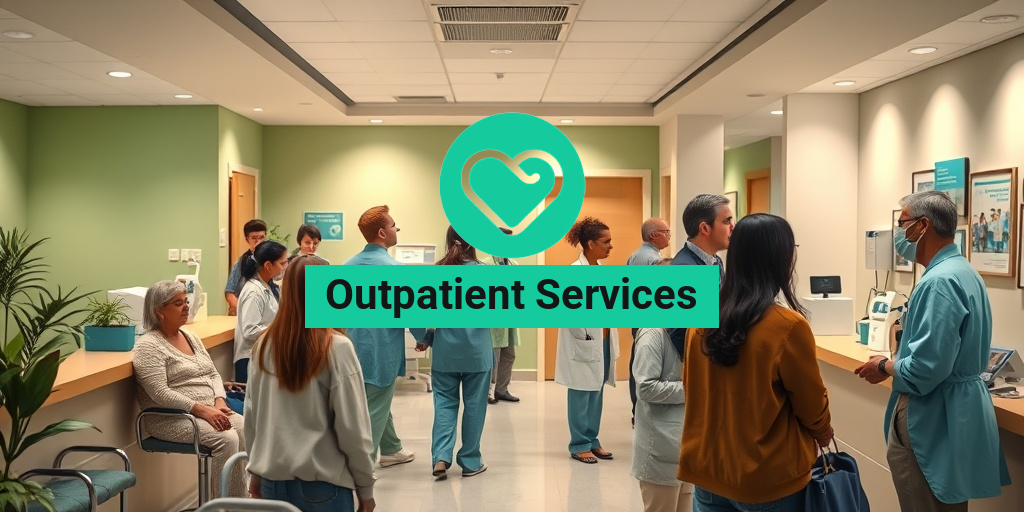What Is Pulmonary Embolism?
A pulmonary embolism (PE) is a serious and potentially life-threatening medical condition that occurs when a blood clot blocks one of the arteries in the lungs. This blockage can reduce blood flow to the lungs, leading to respiratory failure, and in severe cases, even death. 🚨
What Causes Pulmonary Embolism?
Pulmonary embolism typically occurs when a blood clot forms in the deep veins of the legs, known as deep vein thrombosis (DVT). This clot can then break loose and travel through the bloodstream to the lungs, where it becomes lodged in a pulmonary artery. Risk factors for developing DVT and PE include:
- Immobility or prolonged bed rest
- Injury or surgery
- Cancer and its treatment
- Genetic predisposition
- Pregnancy and childbirth
- Age (over 60)
- Heart disease
- Inflammatory bowel disease
In some cases, pulmonary embolism can also occur without any obvious risk factors. It’s essential to be aware of the signs and symptoms to seek medical attention promptly if you suspect a PE. 🚑
Pulmonary Embolism Symptoms
The symptoms of pulmonary embolism can vary in severity and may resemble those of other conditions. However, it’s crucial to recognize the warning signs and seek immediate medical attention if you experience any of the following:
Common Symptoms of Pulmonary Embolism
Sudden and severe symptoms may include:
- Chest pain or discomfort that worsens with deep breathing or coughing
- Shortness of breath or difficulty breathing
- Rapid heart rate
- Coughing up blood or frothy sputum
- Fainting or dizziness
Milder symptoms may include:
- Mild chest pain or discomfort
- Fatigue or weakness
- Coughing or wheezing
- Swollen legs or ankles
If you’re experiencing any of these symptoms, don’t hesitate to seek medical attention. A prompt diagnosis and treatment can significantly improve outcomes and reduce the risk of complications. 💊
Remember, pulmonary embolism is a medical emergency that requires immediate attention. If you’re unsure about your symptoms or have concerns, consult with a healthcare professional or visit Yesil Health AI for evidence-based health answers. 🤝

Pulmonary Embolism Causes and Risk Factors
Pulmonary embolism (PE) is a serious and potentially life-threatening condition that occurs when a blood clot blocks one of the arteries in the lungs. But what causes this to happen, and who is at risk?
What Causes Pulmonary Embolism?
The main cause of pulmonary embolism is a blood clot that forms in the deep veins of the legs, arms, or other parts of the body. This is known as deep vein thrombosis (DVT). The clot can break loose and travel through the bloodstream to the lungs, where it can block the flow of blood and cause a pulmonary embolism.
Other factors can increase the risk of developing a pulmonary embolism, including:
- Immobility: Being bedridden or sitting for long periods, such as during a long flight or car ride, can increase the risk of developing a blood clot.
- Injury or surgery: Trauma, surgery, or other medical procedures can increase the risk of developing a blood clot.
- Cancer: Having cancer, especially advanced cancer, can increase the risk of developing a blood clot.
- Genetics: Inherited blood-clotting disorders, such as factor V Leiden, can increase the risk of developing a pulmonary embolism.
- Pregnancy: The risk of developing a pulmonary embolism is higher during pregnancy and in the weeks following childbirth.
- Birth control pills or hormone replacement therapy: Taking birth control pills or hormone replacement therapy can increase the risk of developing a blood clot.
- Heart disease: Having heart disease, such as heart failure or atrial fibrillation, can increase the risk of developing a pulmonary embolism.
- Infection: Having an infection, such as sepsis, can increase the risk of developing a blood clot.
- Age: The risk of developing a pulmonary embolism increases with age, especially after the age of 40.
Who Is at Risk?
Anyone can develop a pulmonary embolism, but certain groups are at higher risk. These include:
- Older adults: The risk of developing a pulmonary embolism increases with age, especially after the age of 40.
- Pregnant women: Pregnant women are at higher risk of developing a pulmonary embolism, especially in the weeks following childbirth.
- People with cancer: People with cancer, especially advanced cancer, are at higher risk of developing a pulmonary embolism.
- People with heart disease: People with heart disease, such as heart failure or atrial fibrillation, are at higher risk of developing a pulmonary embolism.
- People with inherited blood-clotting disorders: People with inherited blood-clotting disorders, such as factor V Leiden, are at higher risk of developing a pulmonary embolism.
Pulmonary Embolism Diagnosis
Diagnosing a pulmonary embolism can be challenging, as the symptoms can be similar to those of other conditions. However, prompt diagnosis and treatment are crucial to prevent serious complications or death.
Symptoms of Pulmonary Embolism
The symptoms of a pulmonary embolism can vary from person to person, but may include:
- Chest pain or discomfort: This is the most common symptom of a pulmonary embolism, and may feel like a sharp, stabbing pain or a dull ache.
- Shortness of breath: People with a pulmonary embolism may experience shortness of breath or difficulty breathing.
- Coughing up blood: In some cases, people with a pulmonary embolism may cough up blood or frothy sputum.
- Rapid heart rate: A pulmonary embolism can cause a rapid heart rate or palpitations.
- Fever: Some people with a pulmonary embolism may develop a fever.
- Anxiety or panic: People with a pulmonary embolism may experience anxiety or panic due to the severity of their symptoms.
Diagnostic Tests
To diagnose a pulmonary embolism, doctors may use a combination of the following tests:
- Computed tomography (CT) scan: A CT scan uses X-rays and computer technology to produce detailed images of the lungs and pulmonary arteries.
- Ventilation-perfusion scan: This test uses small amounts of radioactive material to measure airflow and blood flow in the lungs.
- D-dimer test: This blood test measures the level of a protein called D-dimer, which is produced when a blood clot breaks down.
- Echocardiogram: This test uses ultrasound waves to produce images of the heart and its blood vessels.
- Pulmonary angiogram: This test uses X-rays and contrast dye to produce detailed images of the pulmonary arteries.
Early diagnosis and treatment are crucial to prevent serious complications or death from a pulmonary embolism. If you suspect you or someone else may have a pulmonary embolism, seek medical attention immediately 🚑.

Pulmonary Embolism Treatment
When it comes to treating pulmonary embolism (PE), the goal is to prevent further clotting, reduce the risk of complications, and improve oxygen levels in the blood. Treatment typically involves a combination of medications, lifestyle changes, and in some cases, surgery. Let’s dive into the different treatment options available.
Medications for Pulmonary Embolism
Anticoagulants are the primary medications used to treat PE. These medications prevent further clotting and reduce the risk of new clots forming. Common anticoagulants used to treat PE include:
- Warfarin (Coumadin)
- Apixaban (Eliquis)
- Rivaroxaban (Xarelto)
- Edoxaban (Savaysa)
- Heparin (intravenous or injectable)
In addition to anticoagulants, thrombolytics may be used in severe cases of PE to dissolve the clot quickly. These medications are typically administered in a hospital setting and can increase the risk of bleeding.
Lifestyle Changes
In addition to medications, making lifestyle changes can help manage PE and reduce the risk of complications. These changes include:
- Getting moving: Regular exercise can help improve circulation and reduce the risk of blood clots. 💪
- Staying hydrated: Drinking plenty of water can help thin the blood and reduce the risk of clotting. 💧
- Managing weight: Maintaining a healthy weight can reduce the risk of PE and other cardiovascular conditions. 🏋️♀️
- Quitting smoking: Smoking can increase the risk of PE and other cardiovascular conditions. 🚭
Surgery and Other Interventions
In some cases, surgery or other interventions may be necessary to treat PE. These may include:
- Thrombectomy: A surgical procedure to remove the clot from the pulmonary artery. 🏥
- Embolectomy: A surgical procedure to remove the clot from the lungs. 🏥
- Inferior vena cava (IVC) filter: A small device inserted into the IVC to catch any clots that may break loose and travel to the lungs. 💉
Pulmonary Embolism Medications
In addition to anticoagulants and thrombolytics, other medications may be prescribed to manage symptoms and reduce the risk of complications. These may include:
- Oxygen therapy: To increase oxygen levels in the blood. ⚕️
- Pain relievers: To manage chest pain and discomfort. 💊
- Antihypertensives: To manage high blood pressure. 💊
It’s essential to work closely with your healthcare provider to determine the best treatment plan for your specific case of PE. With the right combination of medications, lifestyle changes, and interventions, it’s possible to manage PE and reduce the risk of complications. 💕

Pulmonary Embolism Surgery
When it comes to treating pulmonary embolism, surgery is often a last resort, but in some cases, it’s necessary to save a patient’s life. In this section, we’ll delve into the different types of pulmonary embolism surgery, the risks involved, and what to expect during the recovery process.
Types of Pulmonary Embolism Surgery
There are two main types of surgery used to treat pulmonary embolism: thrombectomy and embolectomy.
Thrombectomy: This type of surgery involves removing a blood clot from the pulmonary artery. It’s usually performed in emergency situations where the clot is large and life-threatening. The procedure involves making an incision in the chest, and the surgeon uses a special device to remove the clot.
Embolectomy: This type of surgery involves removing a blood clot from the lungs. It’s usually performed when the clot is small and not life-threatening. The procedure involves making an incision in the chest, and the surgeon uses a special device to remove the clot.
Risks and Complications
Like any surgery, pulmonary embolism surgery carries risks and complications. Some of the possible risks include:
- Bleeding or hemorrhage
- Infection
- Respiratory failure
- Cardiac arrest
- Stroke or brain damage
It’s essential to discuss the risks and benefits of surgery with your doctor to determine if it’s the right option for you.
Recovery Process
The recovery process for pulmonary embolism surgery can be lengthy and challenging. Patients typically spend several days in the hospital after surgery, where they’ll receive close monitoring and care.
After discharge, patients will need to:
- Take medications to prevent blood clots from forming again
- Attend follow-up appointments with their doctor
- Get plenty of rest and avoid strenuous activities
- Monitor their symptoms and report any changes to their doctor
Full recovery can take several weeks to months, and it’s essential to follow the doctor’s instructions to ensure a smooth and safe recovery.
—
Pulmonary Embolism Prevention
Pulmonary embolism prevention is crucial, especially for individuals at high risk. In this section, we’ll explore the ways to reduce the risk of developing pulmonary embolism.
Lifestyle Changes
Making lifestyle changes can significantly reduce the risk of pulmonary embolism. Some of the changes include:
- Staying active: Regular exercise can help improve circulation and reduce the risk of blood clots.
- Maintaining a healthy weight: Excess weight can increase the risk of blood clots, so maintaining a healthy weight through a balanced diet and regular exercise is essential.
- Quitting smoking: Smoking is a significant risk factor for pulmonary embolism, so quitting can greatly reduce the risk.
- Managing underlying conditions: Managing underlying conditions such as heart disease, diabetes, and high blood pressure can reduce the risk of pulmonary embolism.
Medical Interventions
In addition to lifestyle changes, medical interventions can also help prevent pulmonary embolism. Some of the interventions include:
- Anticoagulant medications: These medications can help prevent blood clots from forming.
- Compression stockings: Wearing compression stockings can help improve circulation and reduce the risk of blood clots.
- Intermittent pneumatic compression devices: These devices can help improve circulation and reduce the risk of blood clots.
It’s essential to work closely with your doctor to determine the best prevention strategy for your individual needs.
By making lifestyle changes and using medical interventions, individuals can significantly reduce their risk of developing pulmonary embolism. Remember, prevention is key! 🏥

Frequently Asked Questions about Embolism, Pulmonary
What is Embolism, Pulmonary?
A pulmonary embolism (PE) is a blockage of an artery in the lungs. It occurs when a blood clot or other substance travels from another part of the body and lodges in the lungs, blocking the flow of blood. This can be a life-threatening condition that requires immediate medical attention.
What are the Symptoms of Embolism, Pulmonary?
The symptoms of pulmonary embolism can vary from person to person, but common signs include:
- Chest pain or discomfort that worsens with deep breathing or coughing
- Shortness of breath or difficulty breathing
- Rapid heart rate
- Coughing up blood or frothy sputum
- Fatigue or weakness
- Lightheadedness or dizziness
What are the Causes of Embolism, Pulmonary?
Pulmonary embolism can occur due to various reasons, including:
- Blood clots that form in the legs or arms and travel to the lungs
- Injury or trauma to the veins
- Infection or inflammation of the veins
- Cancer and its treatment
- Genetic disorders that affect blood clotting
- Prolonged immobility, such as during long flights or bed rest
How is Embolism, Pulmonary Diagnosed?
Diagnosing pulmonary embolism typically involves a combination of:
- Medical history and physical examination
- Imaging tests, such as CT scans or ventilation-perfusion scans
- Blood tests, such as D-dimer tests
- Echocardiogram or ultrasound
What is the Treatment for Embolism, Pulmonary?
Treatment for pulmonary embolism usually involves:
- Anticoagulant medications to prevent further clotting
- Thrombolytic medications to dissolve the clot
- Filters or other devices to prevent clots from traveling to the lungs
- Oxygen therapy to improve oxygen levels in the blood
- Supportive care, such as pain management and fluid replacement
Can Embolism, Pulmonary be Prevented?
Yes, pulmonary embolism can be prevented by:
- Moving regularly and avoiding prolonged immobility
- Wearing compression stockings or using compression devices
- Taking anticoagulant medications as prescribed
- Avoiding smoking and managing underlying medical conditions
- Getting regular exercise and maintaining a healthy weight
What is the Prognosis for Embolism, Pulmonary?
The prognosis for pulmonary embolism varies depending on the severity of the condition and promptness of treatment. With timely and appropriate treatment, most people can recover from pulmonary embolism. However, it’s essential to seek medical attention immediately if symptoms occur.
What are the Complications of Embolism, Pulmonary?
If left untreated, pulmonary embolism can lead to serious complications, including:
- Respiratory failure
- Cardiac arrest
- Chronic pulmonary hypertension
- Right heart failure
- Death
Where can I Find More Information about Embolism, Pulmonary?
For more information about pulmonary embolism, you can consult with your healthcare provider or visit reputable online resources, such as the American Heart Association or the National Institutes of Health. 💊




